
Gunpowder, also commonly known as black powder to distinguish it from modern smokeless powder, is the earliest known chemical explosive. It consists of a mixture of sulfur, carbon and potassium nitrate (saltpeter). The sulfur and carbon act as fuels while the saltpeter is an oxidizer. Gunpowder has been widely used as a propellant in firearms, artillery, rocketry, and pyrotechnics, including use as a blasting agent for explosives in quarrying, mining, building pipelines and road building.
A muzzleloader is any firearm into which the projectile and the propellant charge is loaded from the muzzle of the gun. This is distinct from the modern designs of breech-loading firearms. The term "muzzleloader" applies to both rifled and smoothbore type muzzleloaders, and may also refer to the marksman who specializes in the shooting of such firearms. The firing methods, paraphernalia and mechanism further divide both categories as do caliber.
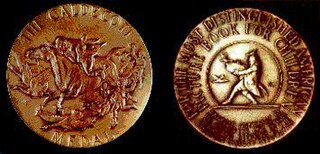
The Randolph Caldecott Medal, frequently shortened to just the Caldecott, annually recognizes the preceding year's "most distinguished American picture book for children". It is awarded to the illustrator by the Association for Library Service to Children (ALSC), a division of the American Library Association (ALA). The Caldecott and Newbery Medals are considered the most prestigious American children's book awards. Beside the Caldecott Medal, the committee awards a variable number of citations to runners-up they deem worthy, called the Caldecott Honor or Caldecott Honor Books.

The Grey King is a contemporary fantasy novel by Susan Cooper, published almost simultaneously by Chatto & Windus and Atheneum in 1975. It is the fourth of five books in her Arthurian fantasy series The Dark is Rising.

Randolph Caldecott was a British artist and illustrator, born in Chester. The Caldecott Medal was named in his honour. He exercised his art chiefly in book illustrations. His abilities as an artist were promptly and generously recognised by the Royal Academy. Caldecott greatly influenced illustration of children's books during the nineteenth century. Two books illustrated by him, priced at a shilling each, were published every Christmas for eight years.

Rifles for Watie is a children's novel by American writer Harold Keith. It was first published in 1957, and received the Newbery Medal the following year.
Lane Smith is an American illustrator and writer of children's books. He is the Kate Greenaway medalist (2017) known for his eclectic visuals and subject matter, both humorous and earnest, such as the contemplative Grandpa Green, which received a Caldecott Honor in 2012, and the outlandish Stinky Cheese Man, which received a Caldecott Honor in 1992.

Dicey's Song is a novel by Cynthia Voigt. It won the Newbery Medal for excellence in American children's literature in 1983.
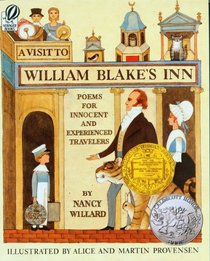
A Visit to William Blake's Inn: Poems for Innocent and Experienced Travelers is a children's picture book written by Nancy Willard and illustrated by Alice and Martin Provensen, published by Harcourt Brace in 1981. The next year Willard won the annual Newbery Medal and the Provensens were one runner-up for the Caldecott Medal from the professional children's librarians. William Blake's Inn was the first Newbery-winning book to also be named a Caldecott Honor Book. Last Stop on Market Street later won the 2016 Newbery Medal and a Caldecott Honor.

A Gathering of Days; A New England Girl's Journal, 1830-32 (1979) is a historical novel by Joan Blos that won the 1980 National Book Award for Children's Books (hardcover) and the 1980 Newbery Medal for excellence in American children's literature.
Edward Randolph Emberley is an American artist and illustrator, best known for children's picture books.
Blair Lent, who sometimes wrote as Ernest Small, was an American illustrator and writer of children's books, perhaps best known for those with Chinese themes such as Tikki Tikki Tembo (1968). He won the 1973 Caldecott Medal for U.S. picture book illustration, recognizing The Funny Little Woman by Arlene Mosel. Lent used a wide range of techniques in his illustrations, including acrylic painting, cardboard cutouts, colored pencil and ink and wash.
The Lewis Carroll Shelf Award was an American literary award conferred on several books annually by the University of Wisconsin–Madison School of Education annually from 1958 to 1979. Award-winning books were deemed to "belong on the same shelf" as Alice's Adventures in Wonderland and Through the Looking-Glass by Lewis Carroll, having enough of the qualities of his work.
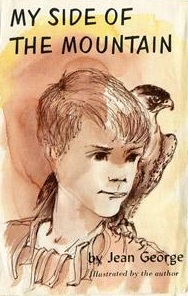
My Side of the Mountain is a middle-grade adventure novel written and illustrated by American writer Jean Craighead George published by E. P. Dutton in 1959. It features a boy who learns courage, independence, and the need for companionship while attempting to live in the Catskill Mountains of New York State. In 1960, it was one of three Newbery Medal Honor Books (runners-up) and in 1969 it was loosely adapted as a film of the same name. George continued the story in print, decades later.

The Rooster Crows: A Book of American Rhymes and Jingles, written and illustrated by Maud and Miska Petersham, is a 1945 picture book published by Simon & Schuster. The Rooster Crows was a Caldecott Medal winner for illustration in 1946. This book is a collection of traditional American nursery rhymes, finger games, skipping rhymes, jingles, and counting-out rhymes. They come from collections all over America.
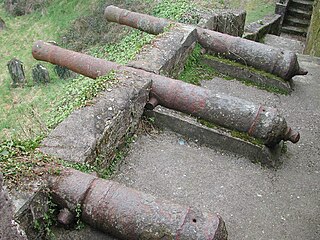
The first usage of cannon in Great Britain was possibly in 1327, when they were used in battle by the English against the Scots. Under the Tudors, the first forts featuring cannon batteries were built, while cannon were first used by the Tudor navy. Cannon were later used during the English Civil War for both siegework and extensively on the battlefield.
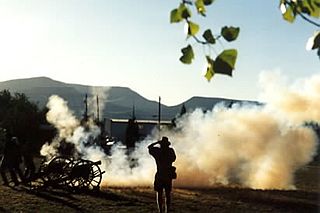
Cannon operation required specialised crew and gunners, who were first enlisted by the Spanish in the 14th century. The nature of cannon operation often depended on the size of the cannon and whether they were breech-loading or muzzle-loading. English cannons of the late 14th century became mobile, while the largest cannon required huge crews to transport and operate them.

The Kalthoff repeater was a type of repeating firearm that was designed by members of the Kalthoff family around 1630, and became the first repeating firearm to be brought into military service. At least nineteen gunsmiths are known to have made weapons following the Kalthoff design. Some early Kalthoff guns were wheellocks, but the rest were flintlocks. The capacity varied between 5 and 30 rounds, depending on the style of the magazines. A single forward and back movement of the trigger guard, which could be done in 1–2 seconds, readied the weapon for firing. The caliber of Kalthoff guns generally varied between 0.4 and 0.8 inches, though .3 caliber examples also exist.

Dear Mr. Henshaw is a juvenile epistolary novel by Beverly Cleary and illustrator Paul O. Zelinsky that was awarded the Newbery Medal in 1984. Based on a 2007 online poll, the National Education Association listed the book as one of its "Teachers' Top 100 Books for Children".

The Lion & the Mouse is a 2009 nearly wordless picture book illustrated by Jerry Pinkney. The book, published by Little, Brown and Company, tells Aesop's fable of The Lion and the Mouse. In the story, a mouse's life is a spared by a lion. Later, after the lion is trapped, the mouse is able to set the lion free. Adapting the fable, with the moral that the weak can help the strong, as a wordless picture book was seen as a successful way of overcoming the brief plot generally found in the source stories. While it was Pinkney's first wordless picture book, it was not the first time he had told the story, having previously included it in his Aesop's Fables, published in 2000. Pinkney, who had received five Caldecott Honors, became the first African American to win the Caldecott Medal for his illustrations in the book. His illustrations were generally praised for their realism and sense of place. The cover illustrations, featuring the title characters but no text, drew particular praise.















